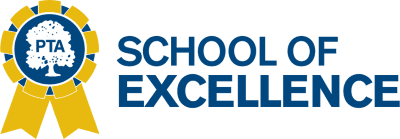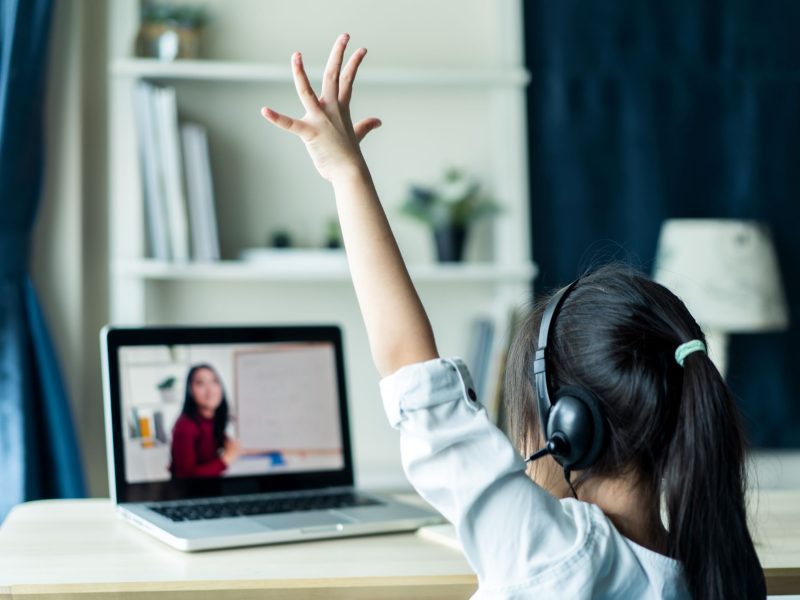How School of Excellence Participants Supported Their Communities During Quarantine
One Voice PTA | By Amy Weinberg | June 26, 2020
By enrolling in the School of Excellence program, PTAs make a commitment to transforming family engagement and building meaningful connections in their school communities. National PTA points to our participating School of Excellence participants as true leaders in strengthening family-school partnerships and, as such, these PTAs are often presented exclusive opportunities. As part of our relief efforts, and in partnership with our generous sponsor TikTok, National PTA awarded $5000 in emergency relief grants to 110 PTAs across 28 State PTA Congresses who were actively participating in the 2019-20 School of Excellence program when the pandemic hit. That’s a total of $550,000 to help PTAs meet the most pressing needs in their school communities during COVID-19, specifically in the areas of:
- Social Emotional Wellbeing and Mental Health
- Food Insecurity
- Distance Learning
- Internet and Device Access
Let’s take a look at some of the information provided in the top-ranked grant application of some of the 2019-20 School of Excellence participants and recent grantees!
SOCIAL EMOTIONAL WELLBEING AND MENTAL HEALTH
After speaking with their school and community partners, Casselberry Elementary School PTSA in Florida is choosing to focus on social emotional wellbeing and mental health of their students to combat the absence of supports offered in school. “It is imperative that our PTSA uses the information and resources available to us to ensure we are advocating for all of our children, but especially those with the greatest unmet needs,” says Lindsay Feist, Casselberry Elementary School PTSA Leader. With their grant funds, Casselberry Elementary School PTSA first plans to reach out to their school community with a translated survey to learn more about their greatest needs. Then, they will distribute mental health/wellness bags to their families that include information, resources and activities to help families feel more prepared and willing to communicate and cope with any anxiety and sadness. Lindsay adds, “We hope this will serve as a reminder that PTSA is still here and working with school administration to ensure that we are serving ALL of our children through this time.”
Bernice Knox Wiley Middle School PTA in Texas is taking a similar approach to combating the mental health needs of their students through the pandemic. With the grant funds, this PTA also plans to develop, assemble, and distribute Wellness Kits to provide students with calming activities and techniques that can help to reduce stress as well as reinforce positive coping skills. While kits are geared toward the needs of students, the PTA also hopes they can be used by family members to develop the same coping strategies and provide some relief to caregivers/parents who are experiencing high levels of stress. The components of the kits were recommended by OT , mental health and other experts and may include:
- Sensory calming items like stress balls, liquid/galaxy bottles or small weighted fabric fidgets
- Focus items such as age-appropriate crossword puzzles, coloring books or small art kits
- Breathing and regulation cards including yoga poses
- Laminated resource sheets, including counselor contacts and free, online resources such as the Headspace app.
Pelham Road Elementary School PTA in South Carolina is also focusing on social emotional wellbeing and mental health because, as Holly Haga states, “With families facing the challenge of working from home and homeschooling for the first time along with the fear brought about by the pandemic they are under more stress than ever. Crisis schooling, as some have called it, has left families struggling to find a work life balance and in some cases further disadvantaging the already disadvantaged. The stresses felt during this time are so far reaching the CDC has included a children-specific “Stress and Coping” area on their COVID-19 section of their website.” The Pelham Road Elementary School PTA plans to use the grant funds to purchase the Second Step program for their counseling department. With classroom and virtual lessons, offered in English and Spanish, the PTA feels that this will them to support their students well into the future.
Above all, don’t let funding be a barrier for school and community improvement efforts. Here are some low/no cost ideas to help improve mental health in your school community!
- Organize neighborhood chalk-your-walks or bear hunt
- Share free links to exercise or art classes
- Create and post videos of teachers and staff for students on social media
- Create and post videos of students doing fun activities on social media
- Connect families to social workers
- Create virtual spirit weeks and post photos
- Send out weekly newsletters
- Collect cards for local nursing homes
- Create art and share it via a virtual gallery
- Reach out to local business for support
FOOD INSECURITY
Most of our students at Simonsdale Elementary in Virginia receive free or reduced meals and rely on the school to provide them with breakfast and lunch throughout the schoolyear. Since their school was closed due to Covid-19, Simonsdale Elementary PTA heard that many of their families were struggling financially and that their students were not eating properly. In an effort to assist their families in need, the PTA is planning to use the grant funds to fill the gap of missed meals by providing a combination of hot meals and grocery boxes to feed “the body, heart, and soul” of their school community families and members.
Loftis Middle PTA in Tennessee is hoping to use the grant funding to maintain and expand the food assistance program that they started through their School of Excellence workplan and continued when school was dismissed for COVID-19. The PTA made a commitment to try to provide food on a weekly basis to the community by creating bags of food to go with the weekend sack packs with a letter explaining the food program and community partnerships. Since many of these students were bus riders without transportation, they delivered boxes of food to homes as needed. Christy Carroll Highfill, Loftis Middle PTA Leader says, “Delivering food to areas of the greatest of need in our community is something that is life changing in many ways. It has been an opportunity to see where some of our students in the greatest of need live and venture into neighborhoods where you realize that the need is much greater than what so many see or understand. This has created a passion within our PTA to ensure that every family has access to the resources they need.” One of their continued goals is create small stationary, free pantries that can be placed within the community so that families who do not wish to be identified can have access to resources without any worries. Another goal is to create mobile pantry systems that can be taken by volunteers into neighborhoods and safe locations that would be accessible to all, including those beyond their student body.
Above all, don’t let funding be a barrier for school and community improvement efforts. Here are some low/no cost ideas to help combat food insecurity in your school community!
- Create a little free pantry
- Offer to support and communicate out school/district efforts
- Pick-up, drop-off or drive students to food assistance
- Encourage community donations to local food banks/drives
- Reach out to local businesses for support
DISTANCE LEARNING
Parklawn Elementary PTA in Virginia is choosing to focus on distance learning as not all of their students have been able to take part in the online component and many have only able to participate in limited ways. With the closure of libraries and summer learning loss in mind, the PTA is planning to provide summer educational packets including leveled books, games and activities with an emphasis on the arts. In addition to supporting students’ learning, the PTA is hoping this may also provide an emotional boost. PTA Leader Elizabeth D’Cruz states, “We really would like to bring as much joy as possible to each student in our school, especially those hardest hit by the financial hardship of the current situation.” Parklawn Elementary PTA is imagining that these educational packets will bring engagement for siblings and adult guardians, to “brighten over 1,000 children’s lives”.
To address barriers to learning as a result of the COVID-19 school closure, Pleasant Hill Elementary School PTA in South Carolina is hoping to establish a Learning Resource Lending Program (LRLP) for the PHES community. PTA Leader Rachel Onello shared that the LRLP will enable loaning of learning kits to PHES families that will include books, parent resources, easy-to-implement tips to facilitate at-home reading skills, and reflective reading activities to build comprehension. To focus on equity for the most vulnerable, the LRLP would also provide a loaner device for students with no access to devices at home to allow these students the same opportunity to complete online learning activities as their peers. Not only will the LRLP augment the distance learning activities provided by the school district, but it will also address key barriers to book and device access created by the COVID-19 school closure. Further, distribution of kits individualized to student needs will serve to buffer against summer learning loss and help prevent skill decay in reading and comprehension. The LRLP will also offer sustainability beyond the immediate COVID-19 crisis, allowing kit contents and devices to be returned to the school and redistributed for future needs, reaching the greatest number of PHES families with a focus on equity for the most vulnerable.
Above all, don’t let funding be a barrier for school and community improvement efforts. Here are some low/no cost ideas to help provide distance learning opportunities to your school community!
- Offer virtual story times
- Provide updates from the governor on COVID-19 and share student-accessible information
- Find parents who can assist with online tutoring
- Set up online study groups by grade-level
- Reach out to local businesses for support
INTERNET AND DEVICE ACCESS
The Bailey’s PTA in Ohio plans to distribute devices to their diverse population of learners and ensure internet connectivity to help alleviate the learning loss. Although their district is working hard to provide these services, many of Bailey’s families and students haven’t had access. The PTA sees this as an issue of equitable access to learning opportunities and is concerned about how the isolation our students are facing will impact their engagement and motivation to learn over the long-term. During the summer, elementary school students will have the opportunity to focus on math and literacy skill-building using self-directed print and digital materials. In addition, they will have the opportunity to connect with teachers virtually during office hours for support. Increasing digital access will help alleviate the learning loss many will experience from being unable to access our district’s distance learning curriculum.
John Burroughs Elementary School in Ohio, like many, was not planning on distance learning this year and as such did not have the technological capacity to provide equipment for every family to be able to participate in distance learning. The school had 180 Chromebooks and allowed each family to sign out one per family, leaving several families scrambling to find available computers. John Burroughs Elementary PTA plans to replace 15 laptops to help with distance learning, testing and online enrichment as well as traditional classroom learning.
Hidden Oaks PTSA in Florida will be making sure their families have access to devices so that each child and maybe multiple children in each home can successfully complete their schoolwork whether in school or at a distance. In addition, the PTA will use the funds to educate their families on the applications used for distance or classroom learning and will partner with local internet providers to accomplish this goal. PTA Leader, Pam Arrieta said, “We want to make sure that our kids and our families in our community have internet access, are educated on internet applications, and have the technology that is best suited to their individual child’s learning needs.” To reach all community members, they will use a variety of communication tools (calls, emails, web pages and social media) to inform their community and translate learning tools in languages, including Spanish, English and Creole.
Above all, don’t let funding be a barrier for school and community improvement efforts. Here are some low/no cost ideas to help provide internet and device access to your school community!
- Equip families with the knowledge of what free/low cost internet options are available in your area
- Partner with local businesses to provide free WiFi locations for families
- Advocate for expanded internet and broadband access by sharing your families’ story
- Host a device drive to help get gently used devices into the hands of students
National PTA encourages you to apply for COVID-19 Relief Funding and enroll in the School of Excellence program.
Learn more and apply for emergency grants by July 12 at PTA.org/COVID19Grants.
Let us help guide your relief efforts while you work to strengthen family-school partnerships and earn national-level recognition as a 2020-2022 National PTA School of Excellence. Visit PTA.org/Excellence to learn more and ENROLL in the 2020-21 School of Excellence program.






